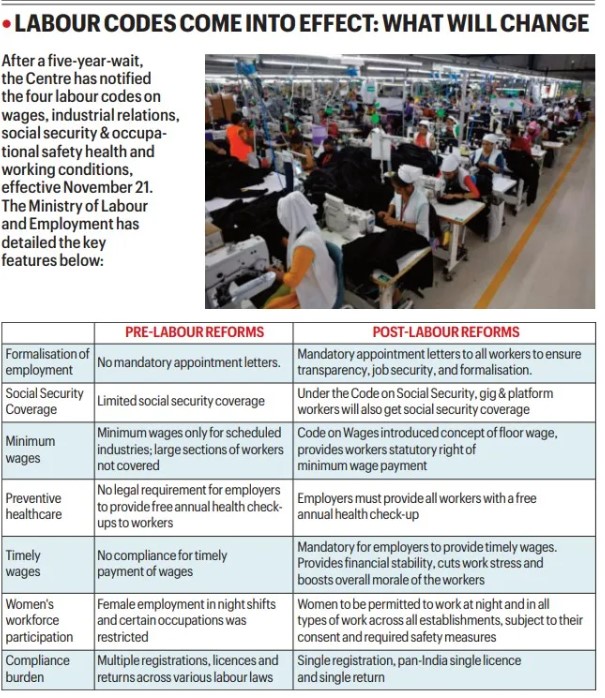7667766266
enquiry@shankarias.in
Mains: GS II – Governance
Recently, the government on Friday (November 21, 2025) notified all four Labour Codes and they replace 29 fragmented laws, some of them dating back to 1930s.

2. The Indian Express| New Labour Codes